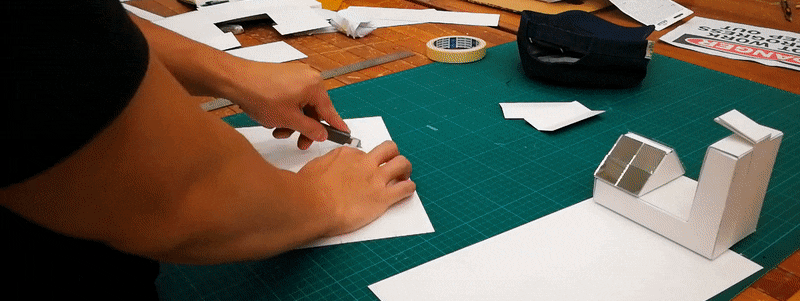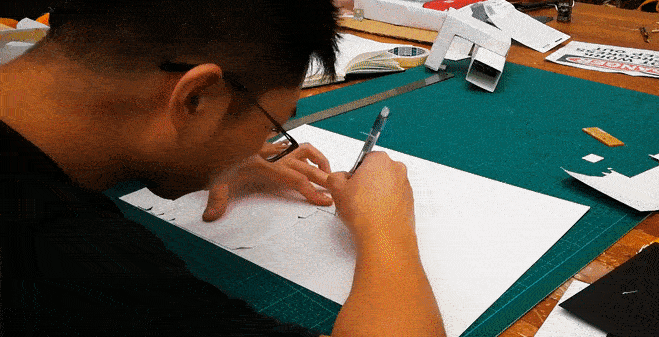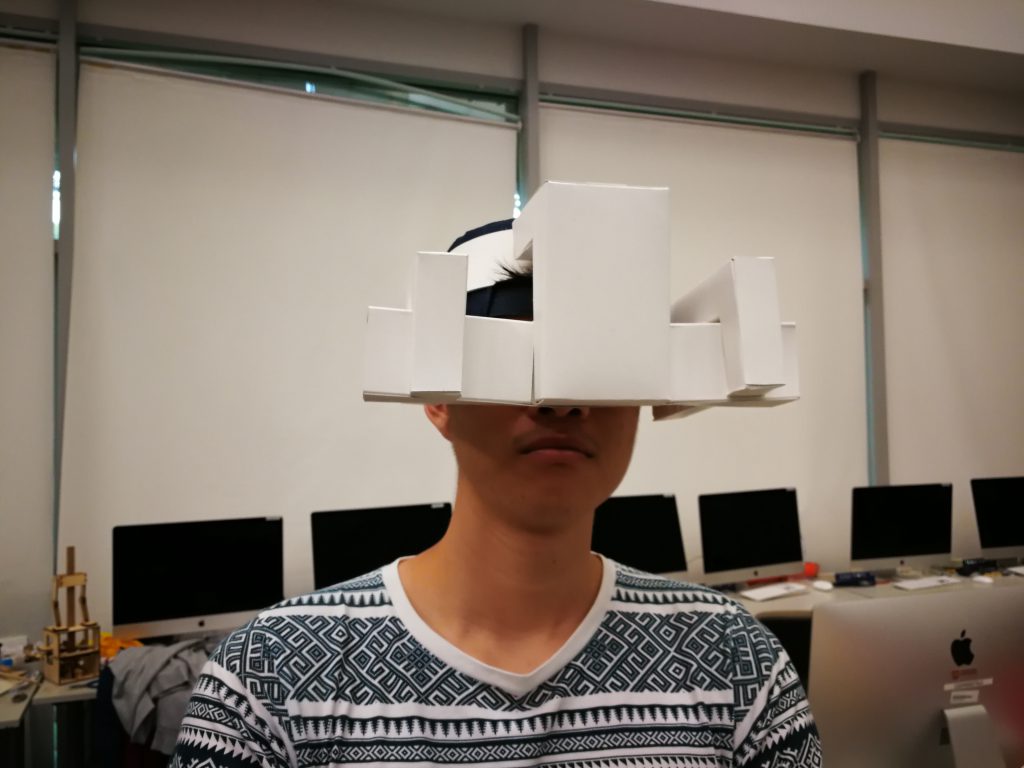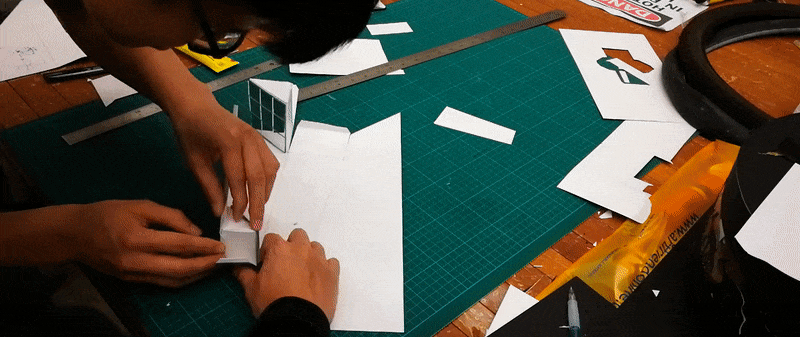For this week, we will be adding more modifications to the prototype.
We started by adding two ‘paths’ to guide restraint the eye from looking else where.
Some process below :
This is how it looked like after adding the sight ‘guiding paths’.
After trying this, we found out that we are still not able to cover the sides. Thus, we decided to add two adjustable barriers at the sides of the prototype.
Some process below :
We made two side barriers to block out even more sight so users can focus on the mirrors.
We also made it adjustable so that it can accommodate many head sizes.
The circular headband is for slotting into the cap we bought from daiso.
From this view, we can see that most of the sight has been blocked for the user. Now they can focus on the mirrors.
Looking through the prototype
Another prototype
For this small tube prototype, the idea was to go as simple as we could with the design. We were more concerned about the effects of distance and reflection image sizes in the mirrors. What we learnt was that the further the reflecting points were from each other, the smaller the reflected images will get. So if we were to use mirrors of equal surface area, then the resultant image would be really small. It certainly will be uncomfortable for the user to have to strain their eyes just to look.
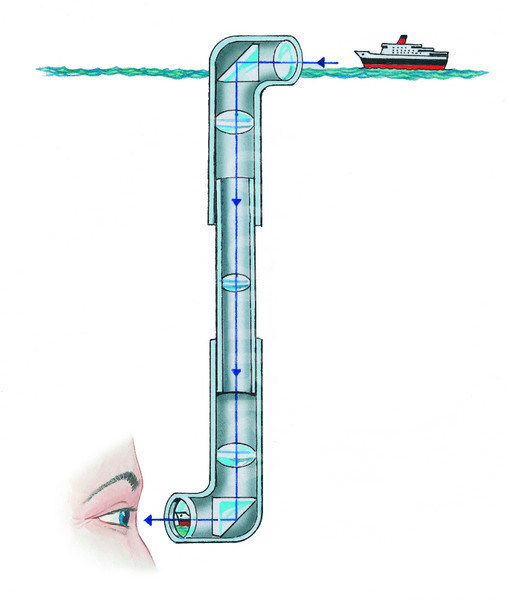
What submarines do in their periscopes is to employ magnifying glasses at the midpoint of the mirrors to achieve the resizing of the reflected images
Some process below :
We decided to do this differently and created two mirror sizes: 2 x 2 inches and 3 x 3 inches. This will account for the magnification needed. The next step would be finding out an optimal distance that our two reflective surfaces have to be apart from each other. We then created a net diagram which served to place the centre points of the 2 x 2 inches and 3 x 3 inches mirrors in a straight line from the viewer’s eye as the viewer looks through the apparatus.
This finding will be rather important as we further decide how many reflections we will want in the final work. Also, it was observed that the segmentation of the mirrors into parts (4 parts as in the 2 x 2 inches; 9 parts in the 3 x 3 inches), created an interesting distortion. We possibly will want to keep this distortion and see what else can be done with it.
Viewing from the tube

